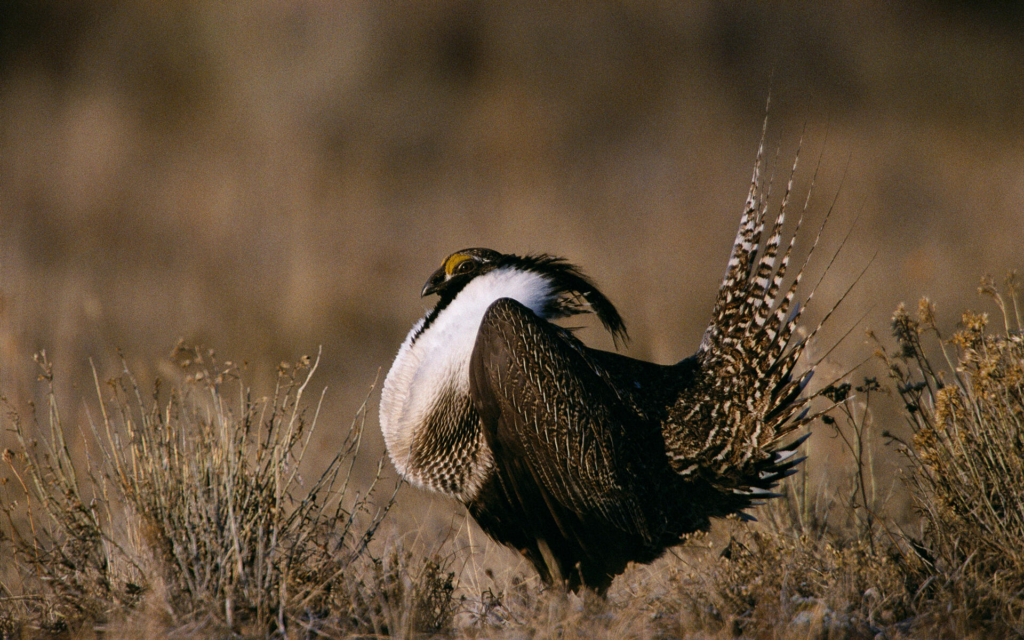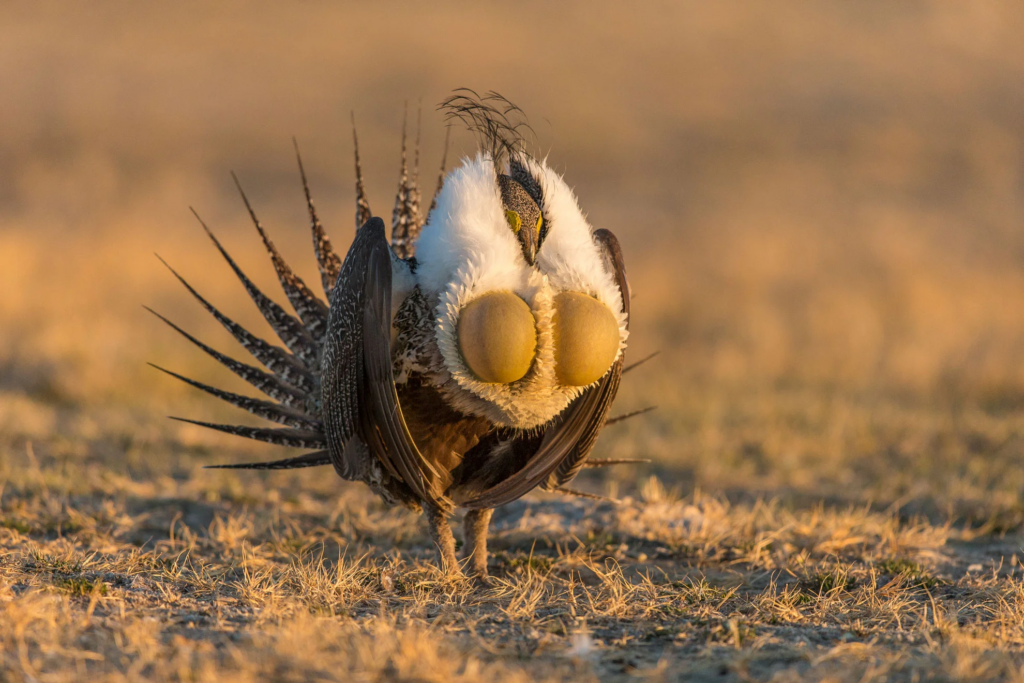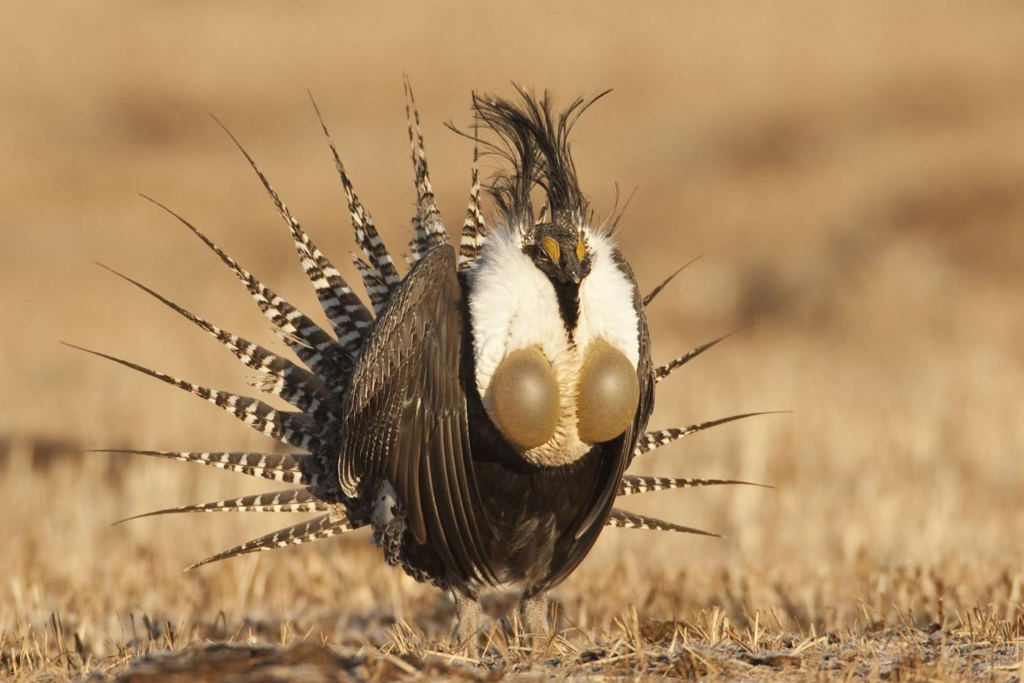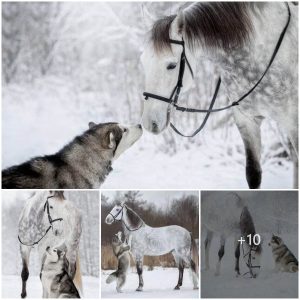
The Gunnison Sage-Grouse (Centrocercus minimus) is a charismatic bird species endemic to the sagebrush habitats of southwestern Colorado and southeastern Utah. Known for its elaborate courtship displays and unique habitat requirements, the Gunnison Sage-Grouse faces significant conservation challenges due to habitat loss and fragmentation. In this article, we will explore the fascinating characteristics, habitat, conservation efforts, and the importance of protecting the Gunnison Sage-Grouse.
The Gunnison Sage-Grouse was first recognized as a distinct species in 2000 and was listed as threatened under the U.S. Endangered Species Act in 2014.Its historical range was more extensive, but habitat loss and degradation have led to population declines and fragmentation.




The Gunnison Sage-Grouse is a medium-sized bird, with males weighing around 3 pounds (1.4 kilograms) and females weighing slightly less.Males have vibrant plumage, including a white ruff around the neck, a dark breast, and intricate patterns of black and white feathers on the body.Females have mottled brown and white plumage, providing excellent camouflage.

The Gunnison Sage-Grouse is closely associated with sagebrush ecosystems, particularly with wet meadows and riparian areas within sagebrush habitats.Its range is limited to seven populations in southwestern Colorado and southeastern Utah.

Males perform elaborate courtship displays, known as “strutting,” to attract females.Strutting involves inflating air sacs on their chests and fanning their tail feathers, while making distinct popping and bubbling sounds.Females select mates based on the males’ displays and overall fitness.
The loss and fragmentation of sagebrush habitats due to urban development, agriculture, energy development, and invasive species pose significant threats to the Gunnison Sage-Grouse.Fragmentation limits the species’ ability to disperse, find suitable breeding areas, and maintain genetic diversity.

Conservation efforts for the Gunnison Sage-Grouse focus on habitat restoration, protection of key breeding and nesting sites, and land management practices that benefit the species.Prescribed burns, reseeding projects, and efforts to control invasive species help improve the quality and availability of sagebrush habitats.
Conservation efforts involve partnerships between federal and state agencies, nonprofit organizations, landowners, and local communities.These collaborations aim to coordinate conservation actions, implement research and monitoring programs, and raise public awareness.

In addition to habitat loss and fragmentation, other threats to the Gunnison Sage-Grouse include climate change, predation, disease, and disturbance from human activities.Addressing these challenges requires comprehensive conservation strategies that consider the species’ ecological needs and threats.
Translocation and captive breeding programs have been initiated to establish new populations and enhance genetic diversity.These efforts involve relocating individuals from more stable populations to areas with smaller populations and limited gene pools.
Public engagement and education play a vital role in the conservation of the Gunnison Sage-Grouse.Outreach programs, guided tours, and citizen science initiatives promote awareness, involvement, and support for conservation efforts.

The Gunnison Sage-Grouse symbolizes the delicate balance between wildlife and habitat conservation in the sagebrush ecosystems of the western United States. By prioritizing the protection and restoration of sagebrush habitats, we not only support the survival of this iconic bird but also preserve the ecological integrity of the sagebrush ecosystem. Through collaborative efforts, public awareness, and effective conservation strategies, we can ensure the long-term survival of the Gunnison Sage-Grouse and contribute to the health and biodiversity of our natural world.





